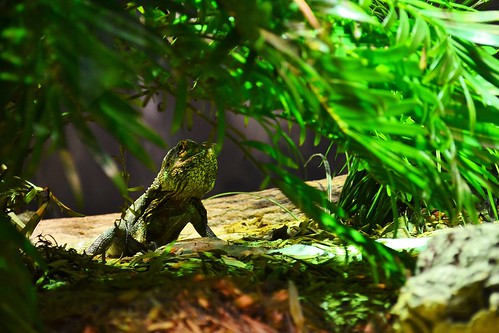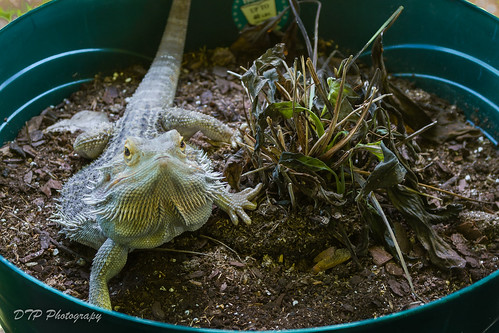Bearded dragons are omnivores, meaning they eat both meat and plants. They have a varied diet that includes vegetables, fruits, and insects. Flowers can also be a great addition to their diet, as they provide additional nutrients and variety.
Feeding bearded dragons flowers should be done in moderation, as too much can cause digestive problems. It is best to feed them a variety of flowers, such as dandelions, hibiscus, and marigolds. Flowers should be washed before feeding them to your bearded dragon.
Flowers that are Safe for Bearded Dragons to Eat
Bearded dragons are omnivores and require a varied diet to stay healthy. Flowers can be a great addition to their diet, but it’s important to choose the right ones. Here are some flowers that are safe for bearded dragons to eat:
Dandelions
Dandelions are a common weed that can actually be very beneficial for your bearded dragon. They contain high levels of calcium, vitamin A, and vitamin C, making them a nutritious addition to their diet. Dandelion leaves and flowers can both be fed to your bearded dragon.
To prepare dandelions, make sure they come from an area free of pesticides or other chemicals. Rinse them thoroughly with water before feeding them to your pet.
You can chop up the leaves and flowers into small pieces or feed them whole. It’s recommended that you provide dandelions in moderation as too much can cause digestive issues.
Hibiscus
Hibiscus is another flower that is safe for bearded dragons and also has nutritional benefits. Hibiscus flowers contain high levels of vitamin C and antioxidants which help boost the immune system of your pet. To prepare hibiscus flowers, make sure they have not been sprayed with any chemicals or pesticides.
Rinse them with water thoroughly before feeding your pet. You may choose to chop up the petals into small pieces or feed them whole.
Rose Petals
Rose petals are another flower that is safe for your bearded dragon to consume but should only be provided in moderation due to their high sugar content. They also contain essential vitamins such as vitamin C which helps boost their immune system.
To serve rose petals, make sure they have not been treated with any chemicals or pesticides before use. Rinse the petals thoroughly with water before feeding your pet.
You may choose to chop them up into small pieces or offer them whole. Incorporating flowers into your bearded dragon’s diet can provide various nutritional benefits.
However, it’s important to choose the right ones and provide them in moderation. By following these guidelines for safe flower consumption, you can enrich your pet’s diet and promote their overall health and well-being.
Flowers that should be avoided by bearded dragons
While there are many flowers that are safe for your bearded dragon to eat, there are also a number of flowers that should be avoided at all costs. These flowers can cause serious harm to your pet and may even lead to death if ingested in large amounts. The following is a list of some of the most common flowers that should never be fed to your bearded dragon:
Lilies
Lilies, while beautiful and fragrant, can be extremely toxic for your pet. They contain a substance called oxalate, which can cause kidney failure in reptiles if ingested in large amounts.
Symptoms of lily poisoning include vomiting, diarrhea, lethargy, and loss of appetite. If you suspect that your bearded dragon has ingested any part of a lily plant, seek veterinary attention immediately.
Tulips
Tulips are another flower that should never be fed to your bearded dragon. They contain compounds called tuliposides and tulipalin A&B that are highly toxic to reptiles.
Symptoms of tulip poisoning include drooling, vomiting, diarrhea, abdominal pain and even respiratory problems. If you have tulips growing in or around your home, make sure they are kept well out of reach of your pet.
Daffodils
Daffodils may look harmless but they contain toxins called lycorine and narcissine which can cause severe digestive upset if consumed in large quantities by bearded dragons. Some symptoms include abdominal pain vomiting and diarrhea.
Be especially careful with daffodil bulbs as these contain the highest concentration of toxins compared with any other parts. Therefore it is important not only keep them away from the animals but also away from their enclosures.
As a rule of thumb, if you’re not sure whether or not a flower is safe for your bearded dragon to eat, it’s better to err on the side of caution and avoid it altogether.
Keep in mind that even small amounts of certain toxins can have serious effects on reptiles, so always do your research and consult with a veterinarian if you suspect your pet has ingested something harmful.
Tips for feeding flowers to your Bearded Dragon
It is crucial to ensure that your bearded dragon has a balanced and healthy diet. While flowers provide excellent nutritional benefits, overfeeding can lead to digestive issues and even obesity in your pet.
Be sure to give them small portions of flowers, no more than one or two petals or leaves per day. The number of flowers you can feed a bearded dragon will depend on its size and age.
Younger dragons will require smaller portions, while larger, more mature dragons can consume slightly more. As a general rule of thumb, do not exceed 10% of their overall diet with flowers.
Feeding your bearded dragon too many flowers too often will upset their stomachs. A good balance is key here. You may want to offer them a different flower every other day or even once a week to make sure they are getting proper nutrition without overloading their systems.
Conclusion
Feeding your bearded dragon flowers can provide essential nutrients and variety in their diet. However, it is vital to know what types of flowers are safe for them to eat and how much and how often they should eat them.
Always do proper research before introducing new foods into your pet’s diet and always monitor them closely after introducing something new. With proper care, feeding habits, nutritionally balanced meals, water availability and environmental factors such as providing enough space in their enclosure with the right temperature gradient as well as regular exposure to sunlight you’ll have a happy and healthy companion for many years to come!
FAQs
Here are some frequently asked questions regarding what flowers bearded dragons can eat:
Can bearded dragons eat flowers?
A: Yes, bearded dragons can eat certain types of flowers. They are omnivorous creatures, meaning their diet consists of both plants and meat.
What types of flowers can bearded dragons eat?
A: Bearded dragons can eat a variety of flowers such as dandelions, hibiscus, rose petals, nasturtiums, marigolds, and carnations. Always ensure they are pesticide-free.
Are there any flowers that are harmful to bearded dragons?
A: Yes, some flowers like azaleas, foxgloves, oleander, and most types of lilies can be harmful to bearded dragons. Always double-check the safety of a flower type before feeding it to your bearded dragon.
How often can bearded dragons eat flowers?
A: Flowers should only make up a small part of a bearded dragon’s diet. They can be used as a treat or supplement to their regular diet of vegetables, fruits, and protein (like insects).
Do flowers need to be washed before feeding them to bearded dragons?
A: Yes, it is recommended to wash all flowers thoroughly before feeding them to bearded dragons to remove any possible pesticides or other harmful substances.
Can bearded dragons eat dried flowers?
A: While fresh flowers are best, bearded dragons can also eat dried flowers. Make sure they are rehydrated by soaking them in water first to prevent potential digestion issues.
Can I feed my bearded dragon flowers from my garden?
A: Yes, you can feed your bearded dragon flowers from your garden, as long as they are safe types and have not been treated with pesticides or other harmful chemicals.
How do I introduce flowers into my bearded dragon’s diet?
A: Start by introducing small quantities of flowers and monitor your bearded dragon for any signs of discomfort or digestive issues. If they seem to enjoy the flowers and have no adverse reactions, you can gradually include them more regularly in their diet.
What should I do if my bearded dragon ate a toxic flower?
A: If you suspect that your bearded dragon has ingested a toxic flower, contact a vet immediately. Symptoms of toxicity can include lethargy, loss of appetite, or changes in stool.
Can I use flowers as a sole food source for my bearded dragon?
No, flowers should not be the sole food source for a bearded dragon. They require a balanced diet of vegetables, fruits, flowers, and protein (like insects). The majority of their diet should be leafy greens, with insects and other items as supplementary foods.



